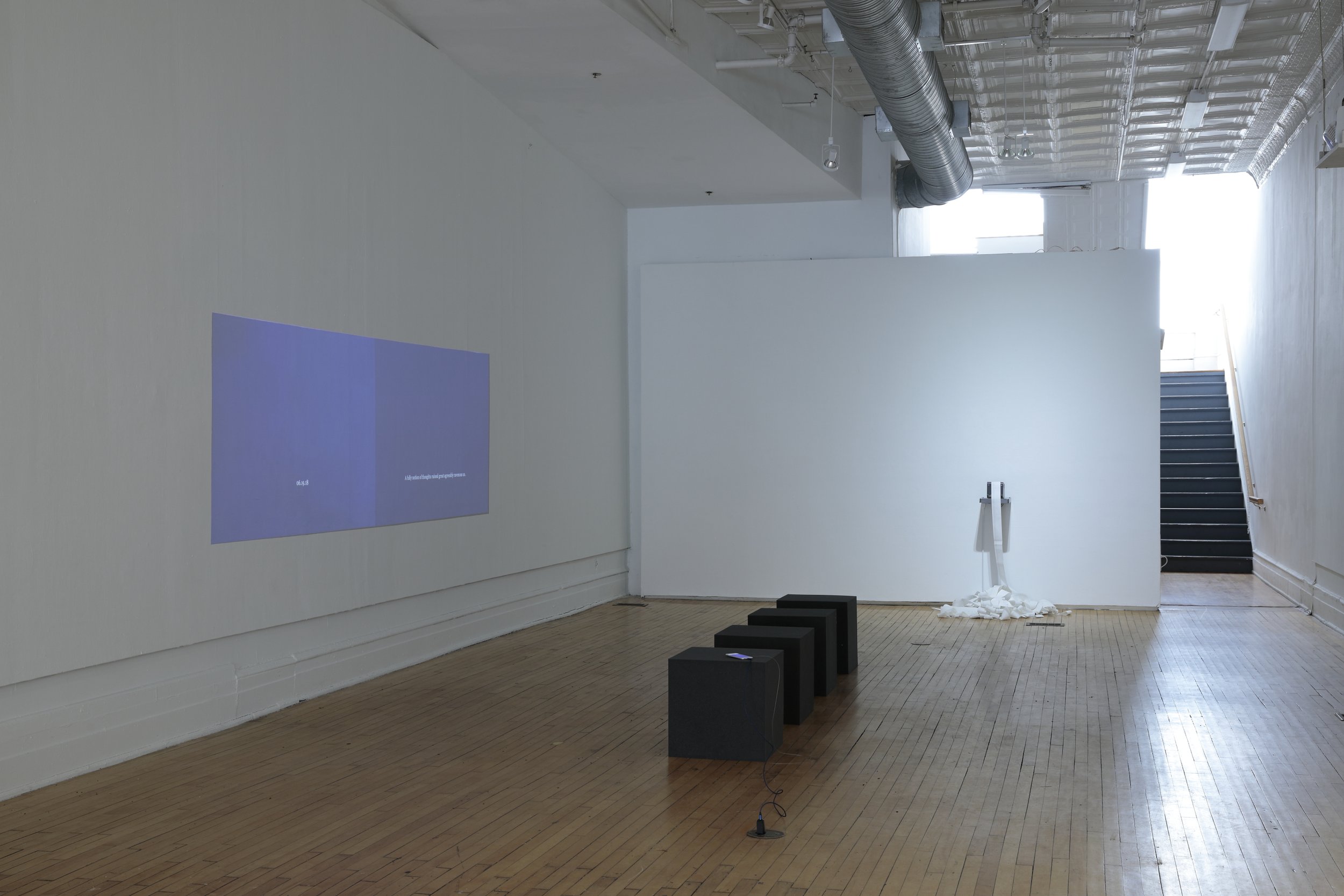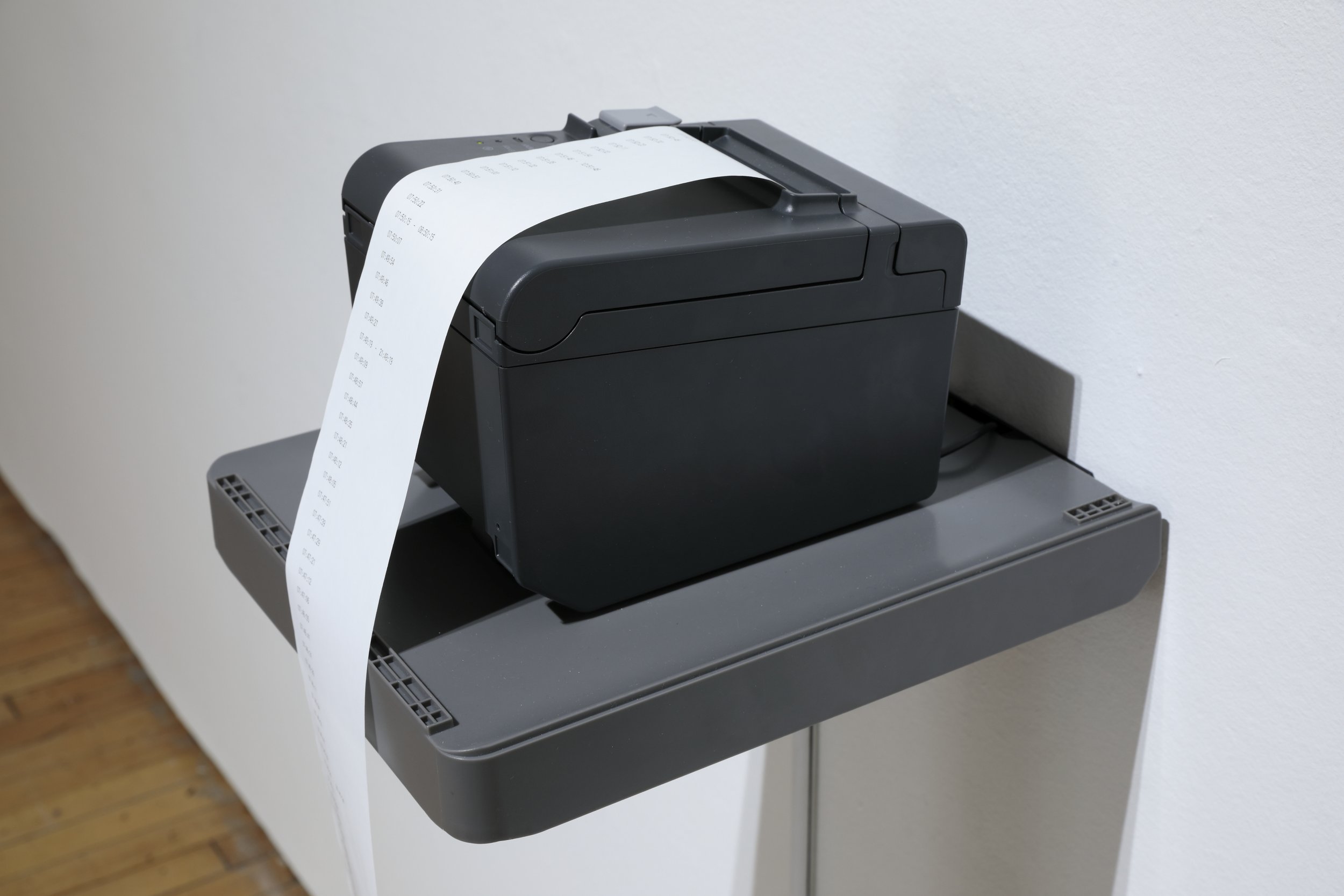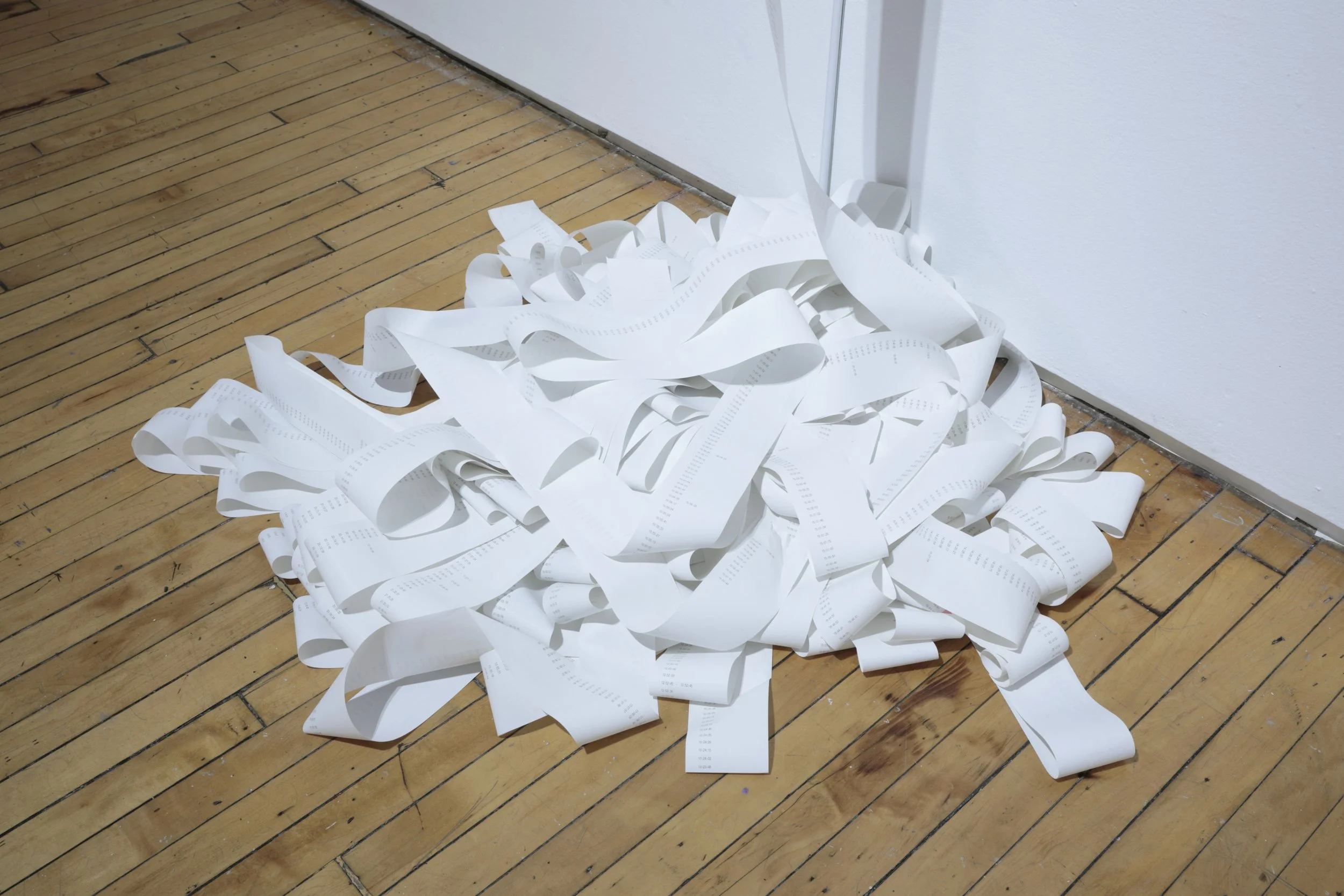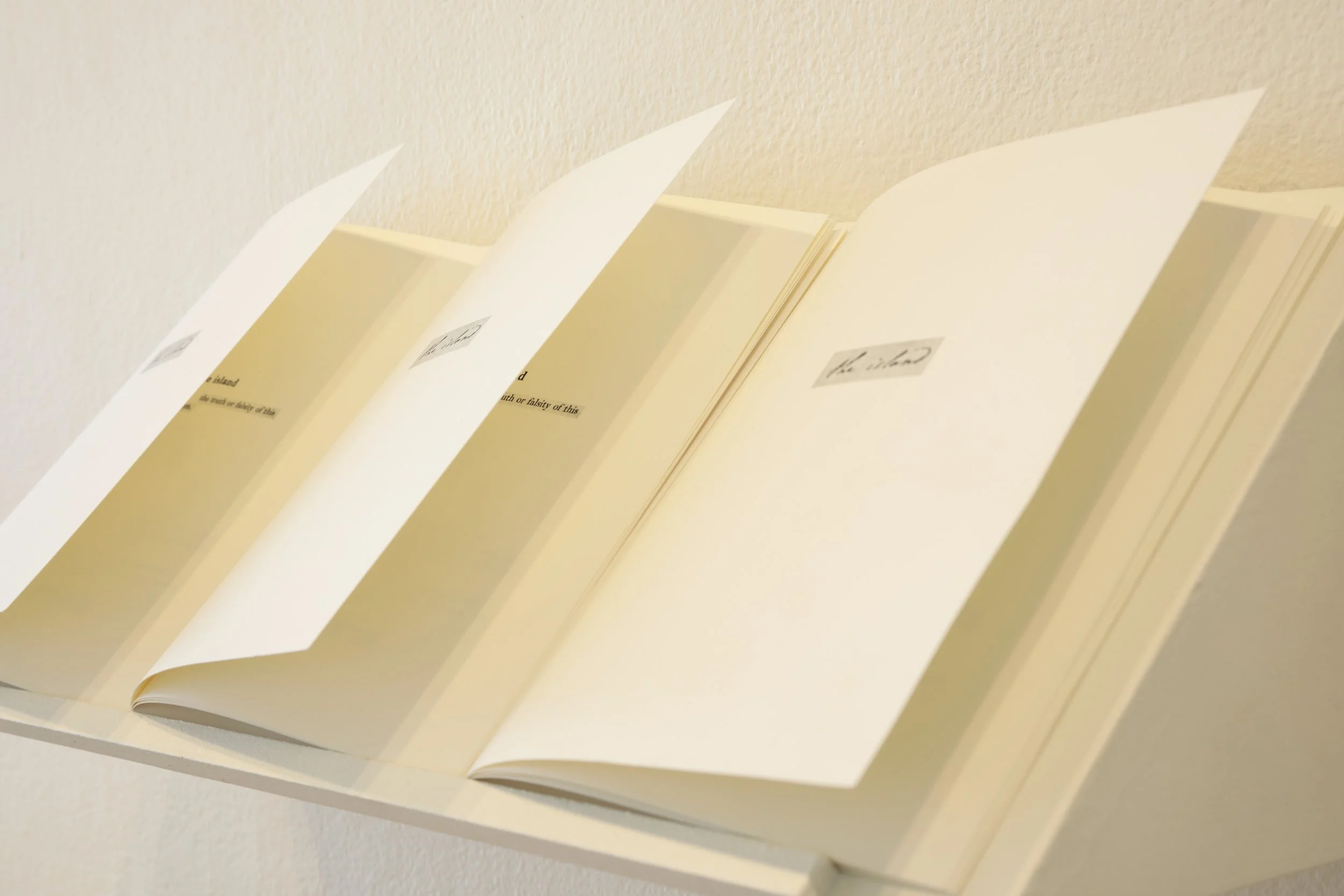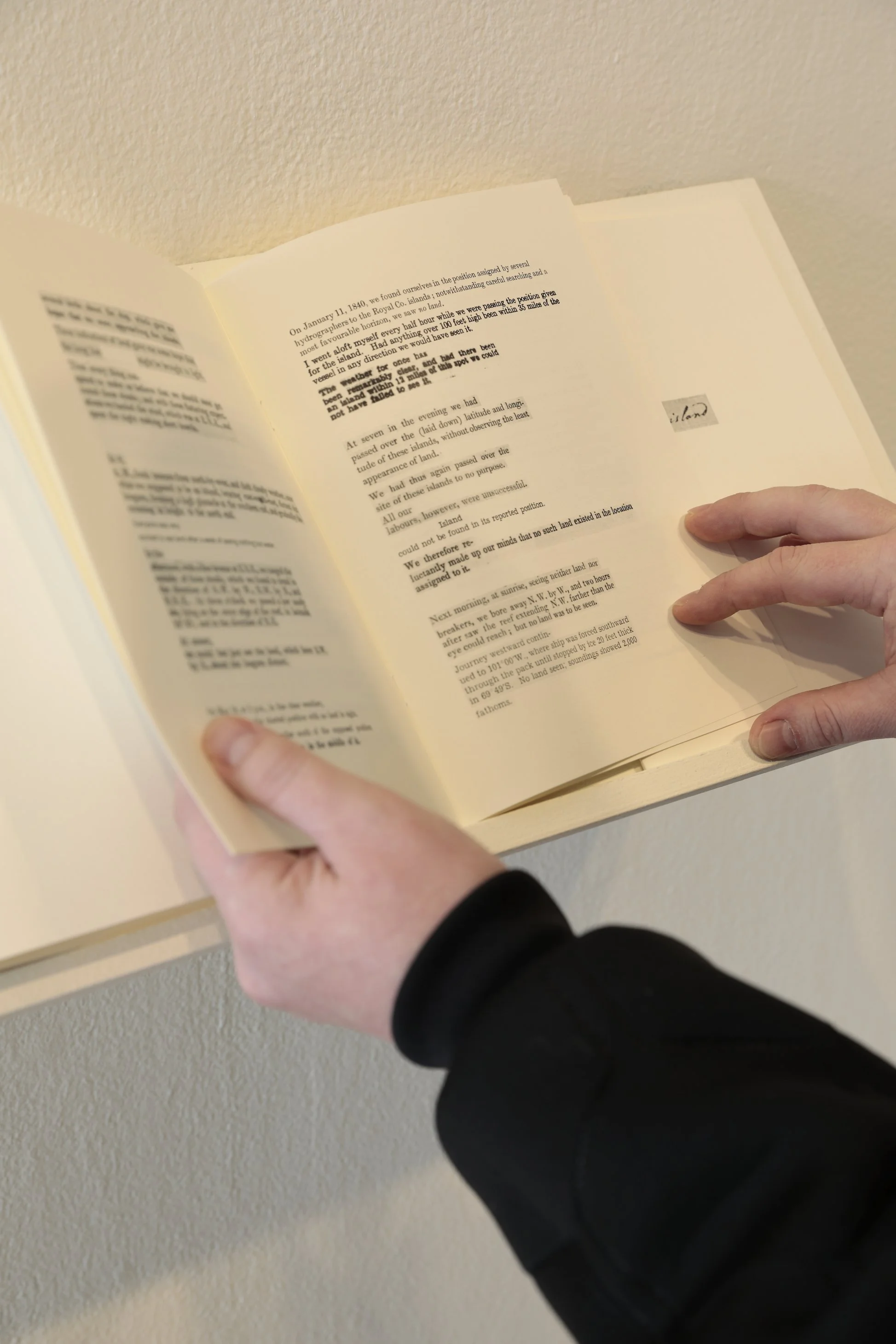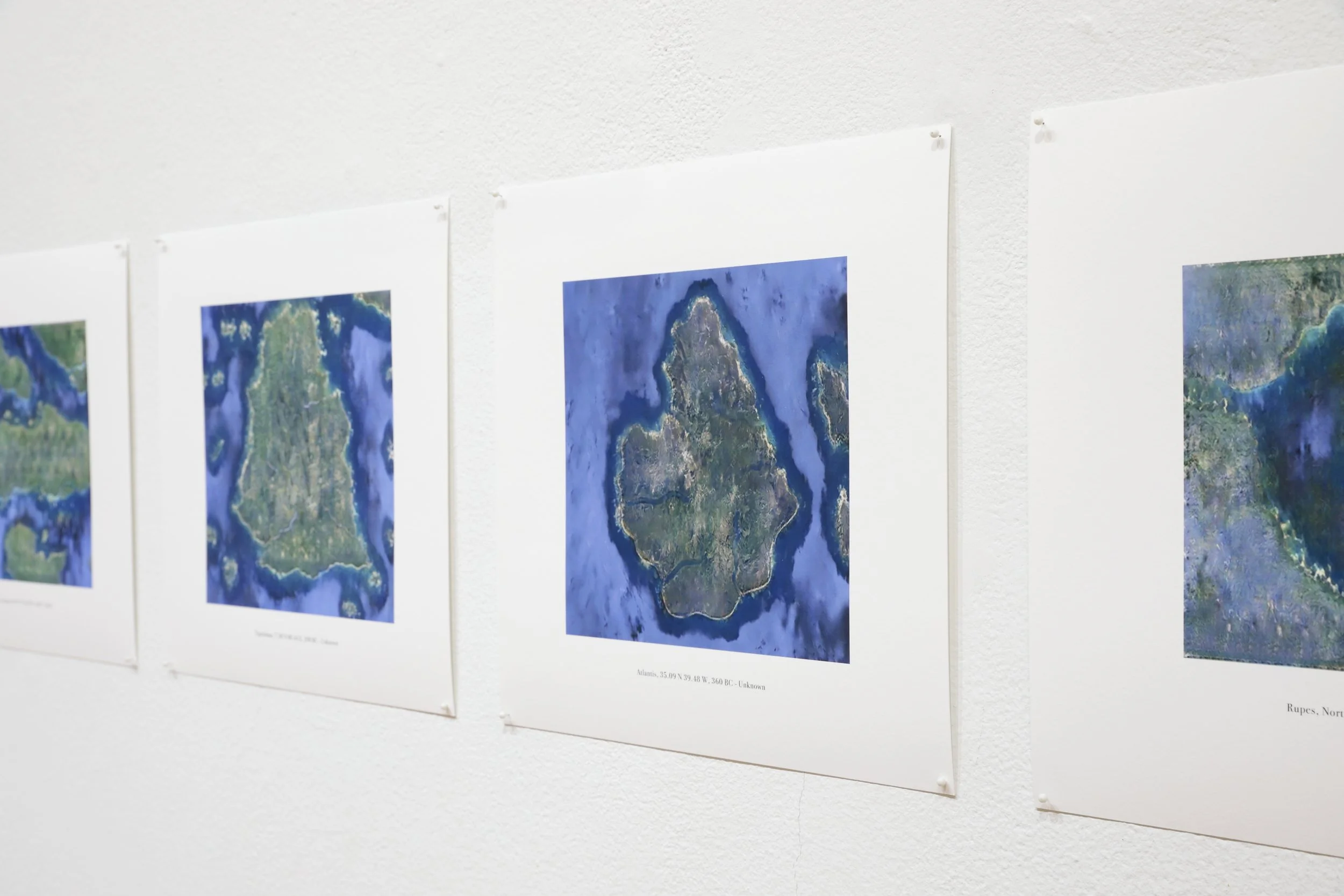TITLE: Proximal, Distal, Adrift
ARTIST: Liliana Farber
LOCATION: 1708 Gallery, Richmond, VA
DATE: 02.28.2020 - 04.18.2020
TEXT:
Proximal, Distal, Adrift, is an exhibition of new work by Liliana Farber that is comprised of autonomous software, performance documentation, video, mobile applications, prints, and text. Farber looks to cartographic histories, storytelling, and machine learning algorithms to develop novel understandings of how contemporary culture engages with data at scales that are human, global, and computational. Proximal, Distal, Adrift inquires: How does internet infrastructure perform and for whom? How does navigation online remain personal (human) while happening through biased algorithmic networks and operating on unknown servers? How do information technologies insinuate trust and validate truth?
The platforms and infrastructures that shape the media landscape are also the site of Farber’s artistic practice and output. She uses Google Earth and machine learning networks as sources for navigation and manipulation in the video work Anonymous and the digital print series Terram in Aspectu. A custom smartphone application, Blue Vessel, invites visitors to write anonymous stories by selecting words from Robinson Crusoe. And an autonomous server, located at 1708, will send signals to random servers across the planet –adrift across fiber optic cables– awaiting response to be logged by a thermal printer throughout the exhibitions duration. Adrift is a performance between machines taking place in the underground channels of internet infrastructure. Proximal, Distal, Adrift unveils the geopolitics, colonialism, and capitalist endeavors that big data and machine intelligence covertly embrace.
Proximal, Distal, Adrift does not eschew the human subject; the title references the very human body that is affected by these technologies. Proximal and distal in anatomy refer to the distance of something to the center of the body –is it nearer or farther? Adrift is unattached and unsupervised, leaving all three parts in a flux of relative location and connection.
PROGRAM:
As part of Proximal, Distal, Adrift, 1708 will co-host with A.I.R. Gallery (Brooklyn, NY) a satellite session of The Unforgettables Reading/Working Group on Saturday April 18, 11am – 2pm. This will be co-led by Roxana Fabius and Liliana Farber. The Unforgettables is a series of monthly meetings held at the A.I.R. space since 2016, initiated by artist Ofri Cnaani and A.I.R. Executive Director Roxana Fabius. This group, formed by readers/workers from several disciplines and walks of life, brings to the front a combination of texts, artworks, and films. Every month the group looks at historic feminist and queer manifestos, science fiction, new feminist fiction writings, and theory pieces that help to imagine a future where no one is forgotten. Selected texts for the session at 1708 will be disseminated prior to the event. *Cancelled due to Covid-19
Algorithmic Extremes in Terram in Aspectu
ON CURATING, Issue 50, Extremes
“The focus of “Algorithmic Extremes in Terram in Aspectu” by the curator Park Myers is Liliana Farber’s work Terram in Aspectu, which is concerned with the structure of thought in the age of the algorithm. The work, produced through machine learning, provides a thought experiment in how truthfulness is determined in the extreme state of the post-truth era. Terram in Aspectu is a series of Google Earth screenshot images of various islands purported to exist in extreme locales. The machine learning process that produced the work is unsupervised in that it automatically recognizes patterns and creates labels from that data to generate new images.
According to Myers, the work exemplifies a shift in critical thinking, pointing out that the means through which knowledge, intention, and expectation in exhibitions are communicated prioritize only a pointedly human subjectivity. The linearity of this interpretive thinking seems to be increasingly incongruent with the complex state of globally networked social and political relations. In his contribution to this issue, Myers insists on the notion that thinking with uncertainty does not outweigh or diminish individual identities, instead it motivates an examination of the inherent means of determining truth in exhibitions. When faced with uncertainty, Myers asserts, the audience retreats to basic logic as a means of protecting a predetermined truth. Myers proposes a curatorial methodology that allows for speculative thought and thinking uncertainty to take place, thus challenging the prescribed means of public discourse that automatically reproduces unchallenged ideologies in the pursuit of maintaining dominant narratives.” Hadas Kadar, editor
